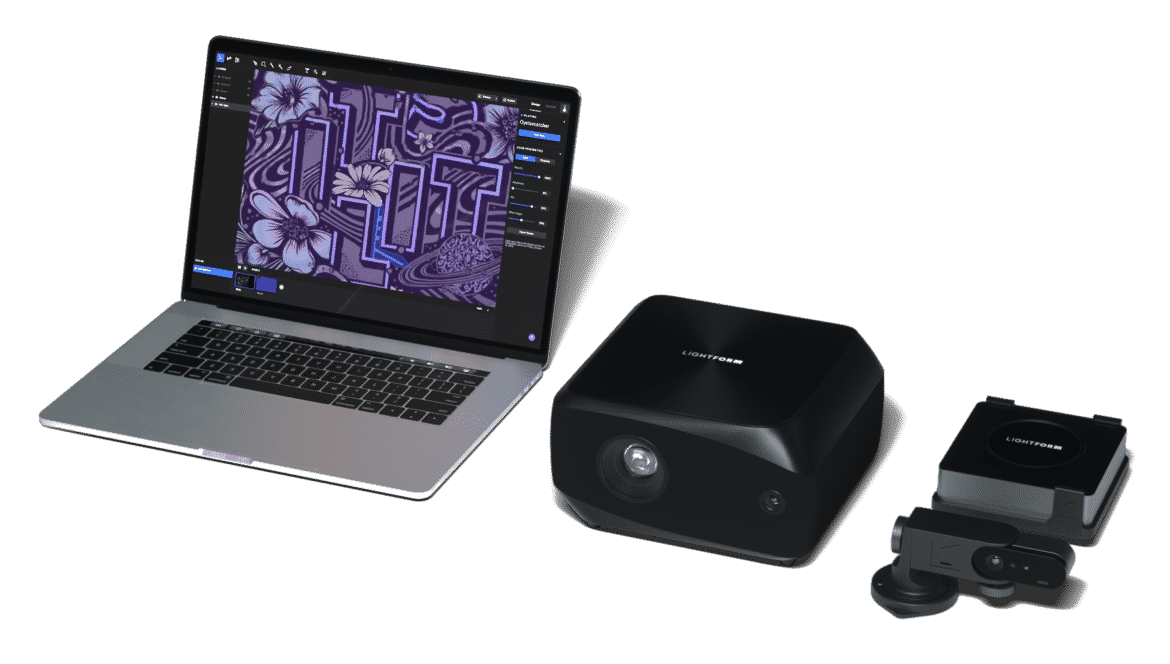
The great thing about Lightform is its flexible application of projected augmented reality (AR) across art, events, retail displays, signage, and much more. It is a versatile system that offers countless possibilities to enhance different spaces and create eye-catching experiences, all while making the process simple, whether you’re a beginner or a projection mapping expert. Flexible application is great, but which Lightform device is best for your needs?
In this blog post, we’ll review the Lightform LFC Kit and LF2 AR Projector to help you determine which is right for you.
Built for Different Use Cases
When choosing between Lightform devices, base your decision on the experience you’d like to create. Thinking through your specific use-case and the conditions you are working with is an essential first step. Do you want to map a projection in a smaller or larger space? Lightform devices can transform objects and environments in settings ranging from the intimate, such as artwork, an office space, or the sign on the wall of a shop, to expansive environments, such as murals and stage backgrounds for live shows. With this in mind, when making your choice between the Lightform LFC Kit and the LF2 AR projector, there are several elements to consider, including setup and requirements, the size and the lighting in your scene, projector features, etc. Let’s look at them in more detail.
Setup & Requirements
The Lightform LFC Kit and the LF2 hardware are aesthetically different. The LFC is designed to be used with an existing projector for maximum flexibility. The LFC Kit is composed of the LFC computer, a Logitech Brio 4K camera, an assembly, and a mounting kit. It can be attached to almost any projector using mounting accessories included with the device. Which projectors are compatible with LFC? We cover that farther below.
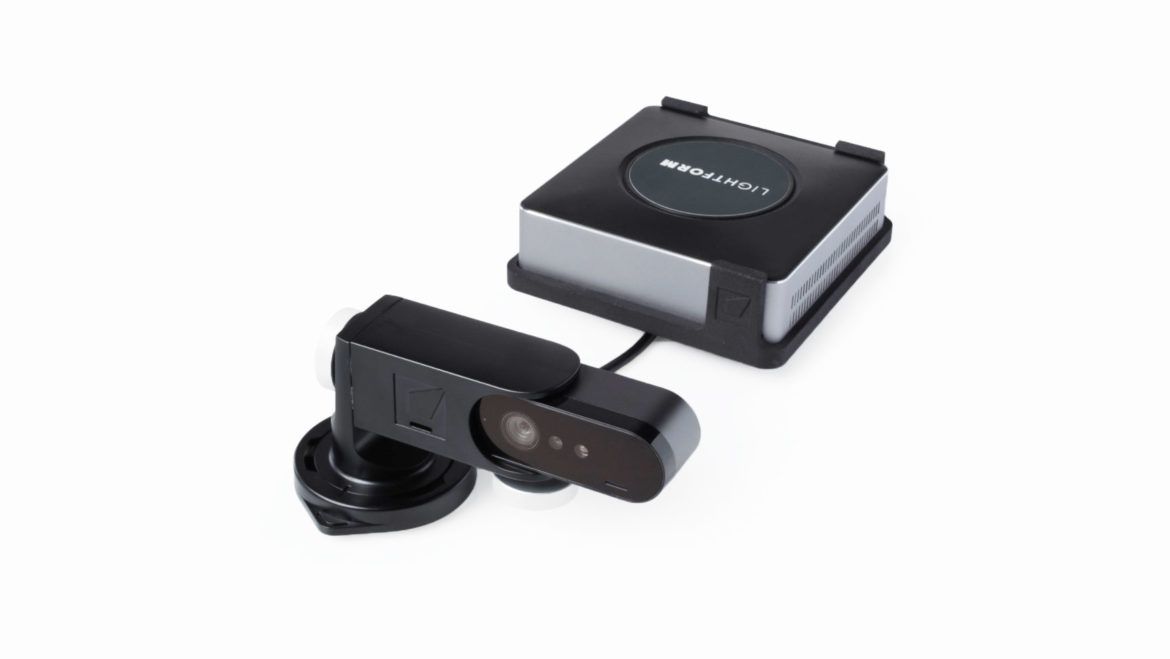
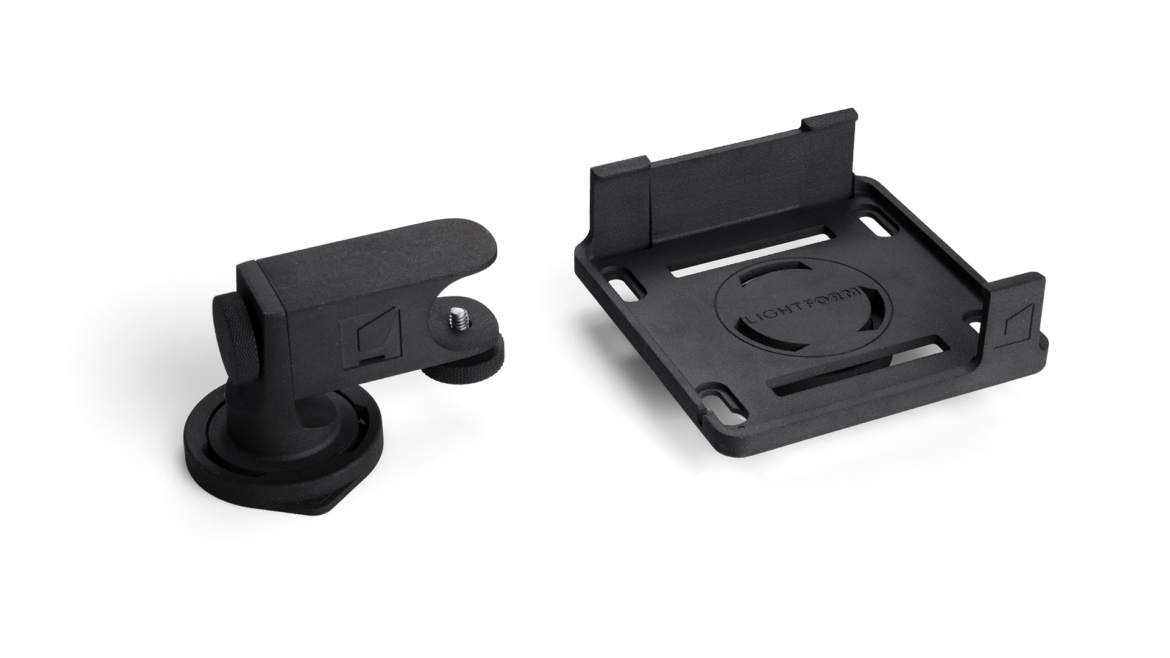
The LF2 is an all-in-one device with an integrated projector and a built-in camera. It comes with a remote and battery. In addition, an optional stand is available to order. The LF2 has a visually appealing sleek black design that not only blends into your decor but helps minimize the visibility of wires and cables.
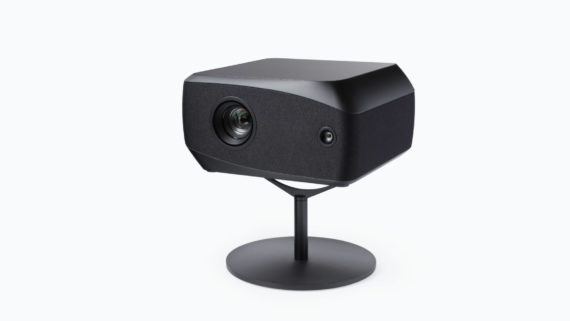
Both devices come with the appropriate AC power adapter and interchangeable plugs for US, EU, UK, Australia, and HK standard outlets. If you’re curious to learn how to set up either of these devices we recommend reading the Set Up Your Lightform Device entry on the Lightform Guide.
Both the Lightform LFC and LF2 share the same minimum computer requirements. Lightform’s free Creator software is compatible with computers running MacOS 10.13 or Windows 10 and later. To yield the best results when using Lightform Creator software, we recommend using computers that exceed our minimum computer requirements such as those used for media and graphics editing.
Scene Size & Ambient Light
To best determine which Lightform product will work best for your needs, it’s important to factor in what you’ll be projecting on, the size/area of your projection, and the lighting environment of your scene.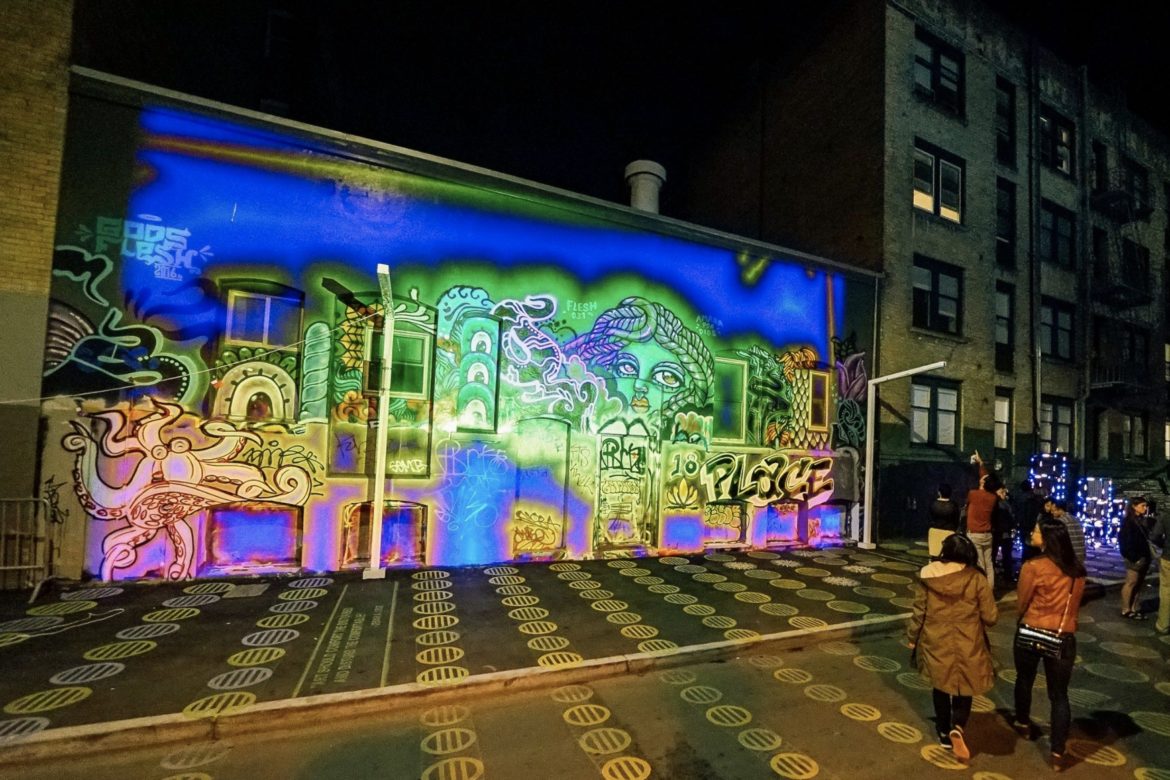
The Lightform LFC is an ideal choice, when paired with an existing projector, to create medium to large scale installations. Using an existing high lumen projector with an LFC will enable the mapping of objects and spaces at a farther distance. An LFC can scan matte objects that are at least 1 foot away and can be used to illuminate almost any size scene when paired with the appropriate projector. If you will be projecting in an environment with a significant amount of ambient light, or if you have a very large scene size, you will need a brighter (high lumen) projector.
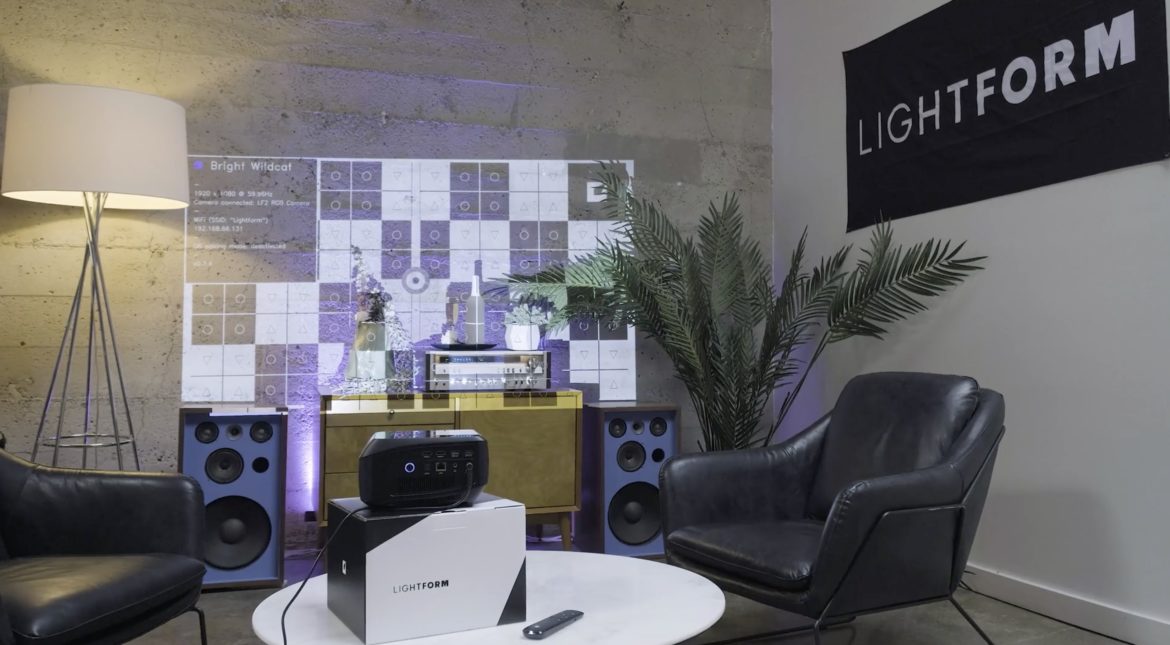
The LF2 AR Projector is an all-in-one solution ideal for smaller-scale indoor installations for home, office, and retail spaces. In bright ambient light, it can scan scenes up to ~6 feet wide, and in dark environments, it can scan scenes up to ~12 feet wide. Additional information on this topic can be found in our guide article How large of an area does the LF2 cover?
The quality of the projection varies with the amount of sun or artificial light in the scene. The brighter your scene, the more powerful/brighter your projector will need to be. If you are projecting outdoors, keep in mind that the best results will be visible at night time as opposed to daylight. Lightform devices must be protected from weather conditions since they are not water-resistant. We also recommend ensuring proper ventilation around the device. Ideal operating temperatures are between 32°F – 86°F (0°C – 30°C).
Projector Choice
The decision between using a Lightform LFC or LF2 often comes down to projector features and projector compatibility. Since the LFC is an independent unit you can pair a wide variety of projectors, normal and short-throw, for maximum flexibility, and lumen strength. The LF2, on the other hand, simplifies the process by pairing Lightform technology into a projector unit. LF2 is the full-package so there’s no need to pair it with an external projector.
Using Your Own Projector with Lightform LFC
If you have a projector of your own, the following criteria are required for LFC compatibility:
- HDMI – A minimum of 1 HDMI port.
- Throw ratio – 0.5 – 2.0
Throw ratio is the relation between the distance from the projector’s lens to the projected image and the width of the projected image. If interested in more detail about throw ration we recommend checking out our guide article Understanding Projector Throw Ratio. - Brightness (in lumens) – 100 -100K.
The LFC works with projectors of any brightness. The visual quality of projections will vary depending on the ambient light present in your scene. The brighter your scene, the brighter your projector will need to be. - Lamp Type – no requirement
LFC will work with projectors with any lamp type (e.g., LED, Laser, bulb). - Output maximum – WUXGA (1920 x 1200)
The LFC works with 4K projectors that accept HD input, but will only result in HD content. Generally, 4k projectors accept 1080p input and natively upsample the 1080p content to 4K resolution.
To check supported specs and throw ratio for projectors we recommend using Projector Central’s Projector Throw Distance Calculator. If you don’t already have a projector, using this resource will help you narrow in one that will work for your use case. Minimum projector requirements are also listed in the Lightform User Guide.
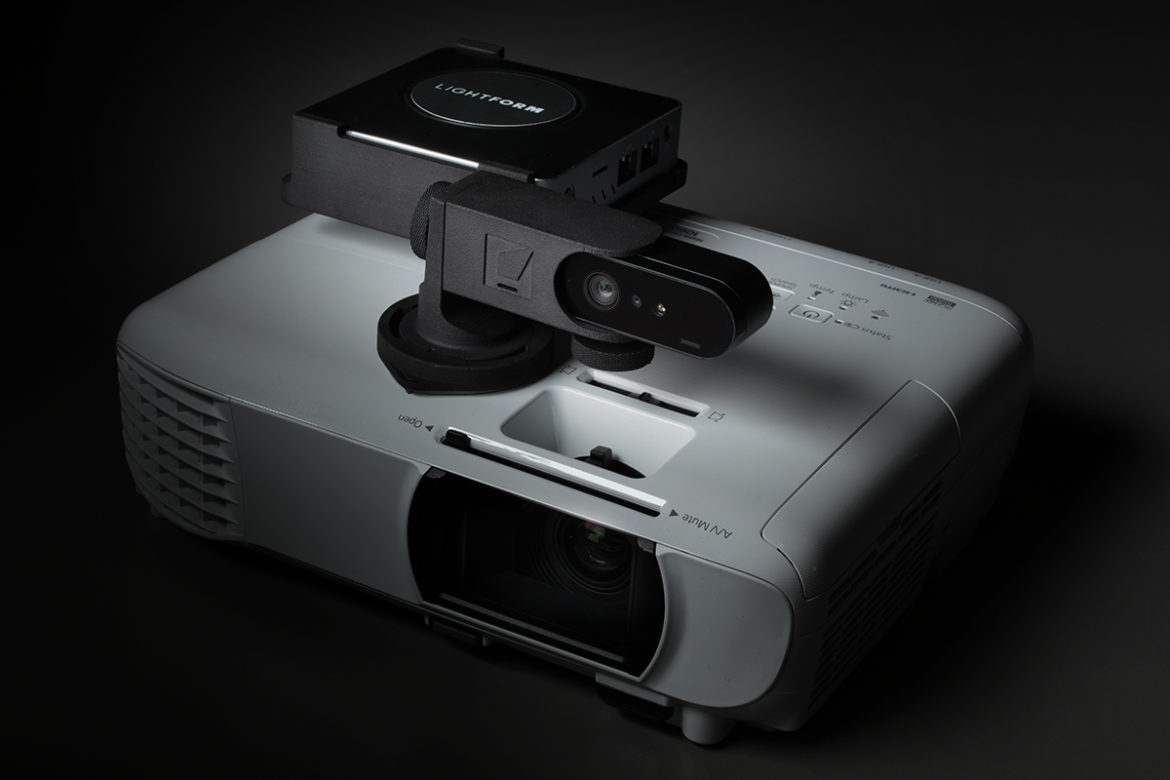
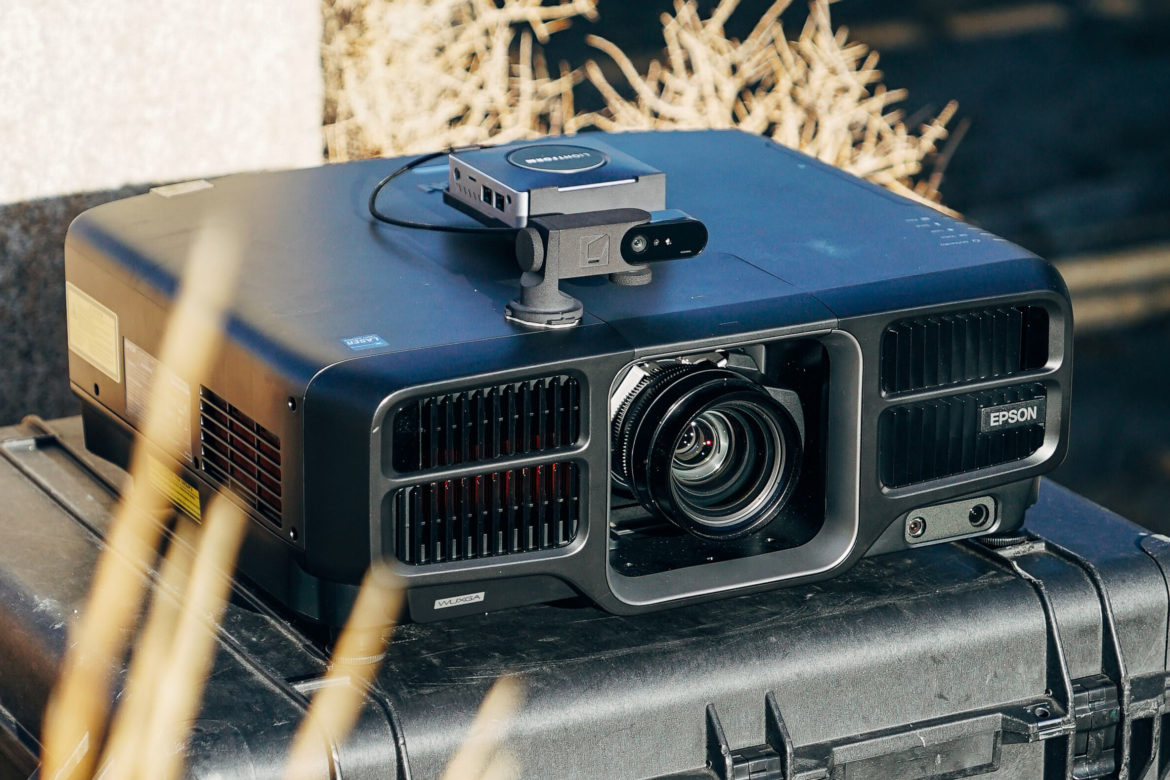
There are limitations to using your own projector. The LFC must remain connected to the projector via HDMI at all times. Content plays off of the Lightform device and the camera can be useful for realignment or taking another scan if something moves in the scene.
Using the Lightform LF2 AR Projector
The advantage of using an LF2 AR projector is that it provides a compact all-in-one system with its integrated projector. It is best suited for small scale installations and indoor spaces. The LF2 projector’s specifications are as follows:
- Throw ratio – 1.2
- Brightness – 1,000 lumens
- Lamp life – 30,000-hours via LED light engine
- HDMI – 2 HDMI input ports + LAN
- Resolution – 1920 x 1080p native HD resolution
The LF2 has an RGB / IR Camera and a lens with motorized focus. You can use Lightform Creator to author AR content. You can also opt for a useful tabletop stand to set up your LF2 AR projector.
Performance
Projector performance is important to consider when evaluating how much processing power or memory you’ll need. Performance needs will differ between running a live show or a concert and running simple effect loops in a home/office. The more effects being run, the more computational power needed.
As a comparison between the two products, LFC has 8Gb of RAM while LF2 has 2Gb. The LFC has a Dual-core Intel Celeron N4000 (64 bit) processor and the LF2 has a Quad-core ARM Amlogic T968 (64 bit) processor. Regarding GPU power, the LFC has an Intel UHD 600 and the LF2 has a Mali-T830 MP2 to handle the graphics. All in all, the advantage here goes to LFC, which is 2-4x faster than LF2 depending on project content. So, if your main criteria is faster performance, then you should opt for the LFC. You can see some more differences between LFC and LF2 in the spec sheet below:
How are Lightform LF2 and LFC different?

Budget Considerations
Historically projection mapping has been expensive, complicated, and daunting for beginners. Lightform has simplified the process with innovative hardware and easy-to-use design tools, all while keeping the entry-level price point affordable. To minimize out of pocket expenses for hardware two paths exist: 1) existing projector owners can add on an LFC kit, and 2) those looking to cost-effectively combine the purchase of a projector and Lighform technology can do so with the LF2 AR projector. Unlike other solutions that charge for their software (purchasing a perpetual license or charging a subscription), Lightform includes a Creator software license for free with every LFC or LF2 order.
Looking to Try Out Lightform Creator Software?
Lightform Creator software is free for download and a sample project is available in case you want to try it out and practice working on your first scan.

Below are two recent examples of installations utilizing the Lightform LFC Kit and LF2 AR projector. Check them out to get a feel for what is possible. If you’re hungry for more examples we invite you to check out our recent blog post 10 Projected AR Examples By Lightform Customers.
Lightform LFC at The Conservatory of Flowers in San Francisco for “Nightbloom”
Lightform LF2 AR projector with 3D Drippy Sculpture by artist Dan Lam
While there are many differences between the Lightform LFC Kit and LF2 AR projector they share a common advantage, they make the process of image mapping and projected augmented reality (AR) quick and easy compared to older tools and technology. Now it’s possible to deploy projected AR installations in minutes.
Note:
As of August 12th, 2022, Lightform is no longer in business and is no longer providing technical support for the product. Please refer to the Lightform Guide and FAQ for self-help resources.
No comment yet, add your voice below!